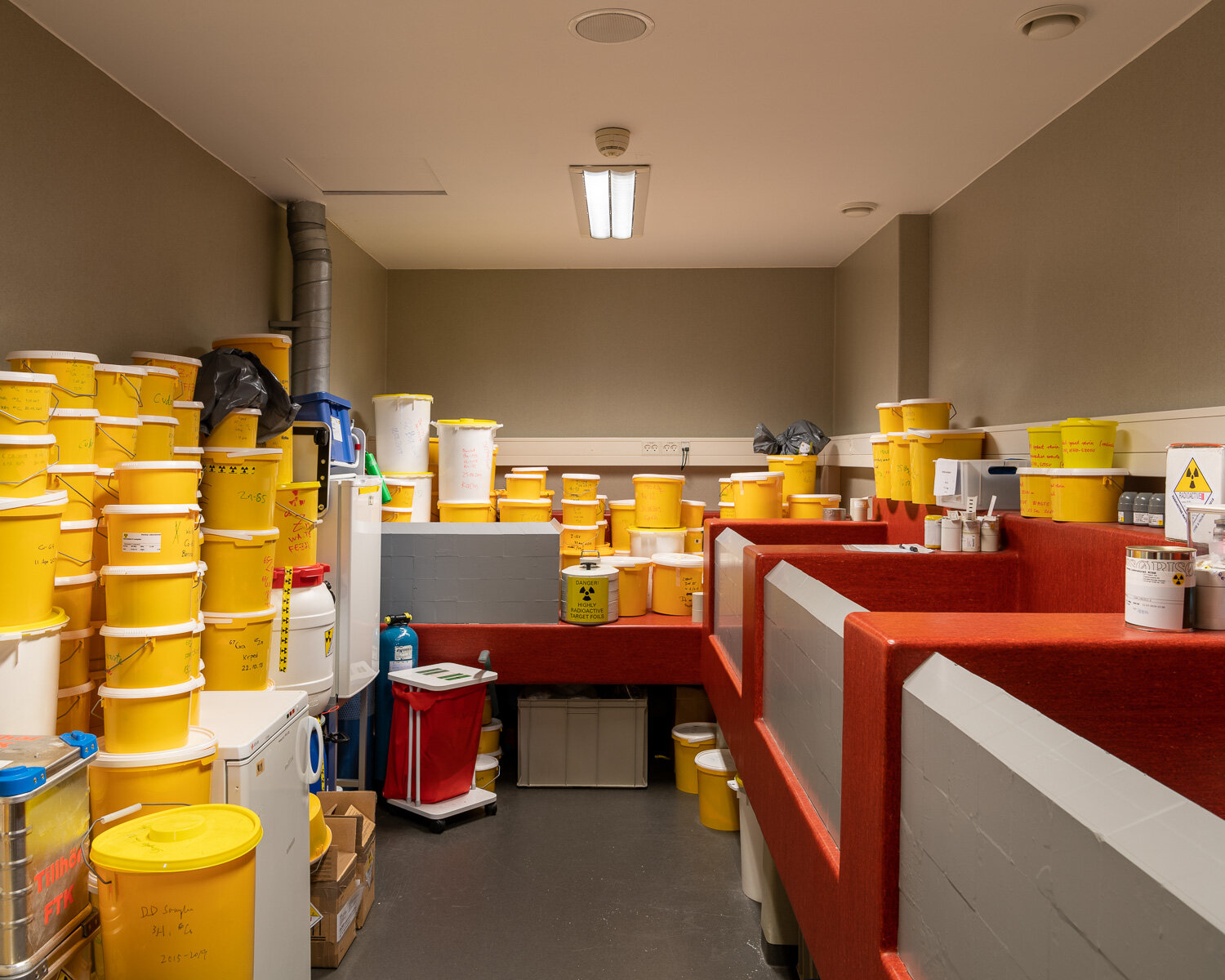Decommissioning the “hot-cells” facility, shielded nuclear contamination boxes
In 1958 the Nobel Prize winning Danish nuclear physicist Niels Bohr founded an atomic research facility at Risø, next to the tranquil Roskilde Fjord, forty-five kilometers from Copenhagen. The goal was to explore the peaceful use of atoms in Denmark, and by 1960 three nuclear test reactors had been built. Bohr, who passed away in 1962, was a proponent of nuclear power - but in 1985 a decision was made by the Danish parliament against the use of nuclear power, and Risø’s reactors days were numbered.
Door to the Dansk Reaktor 3 nuclear reactor, built in 1960
Decommissioning Dansk Reactor 3
Decommissioned Dansk Reactor 1, built in 1957 and closed in 2001
Research was continued at Risø, and the DR3 reactor was used for neutron radiation (doping) of silicon for use in the semiconductor industry, a process by which impurities are introduced into a semiconductor for the purpose of modulating its electrical, optical and structural properties. In the late 1990s Risø was responsible for a third of the world market for neutron-doped silicon. But in 2000 DR3 was temporarily closed because of a small leak and the decision was made to close the reactors and begin the decommissioning process.
Decommissioning Dansk Reactor 3
Decommissioning Dansk Reactor 3
Dansk Reactor 2, built in 1958 and closed in 1975
Radioactive material transport capsule for Dansk Reactor 3
A state organisation called Danish Decommissioning was founded to clear the nuclear facilities to “greenfield” status meaning that it will be restored to the conditions that existed before the reactors were built. Danish Decommissioning has successfully decommissioned two of the reactors and is well on the way to clearing the final facilities within the next few years. Danish Decommissioning is also responsible for collecting and storing all nuclear waste from Denmark, including medical waste, which is stored in barrels in warehouses alongside the disassembled reactors at Risø. A decision has been made by parliament to build an underground bunker in Denmark to deposit all this waste, but it is proving difficult to find the right site for the bunker as nobody wants it in their neighbourhood, so a new warehouse is being built at Risø.
Checking radiation levels after working in contaminate areas
Radioactive waste is collected and stored from all over Denmark
Water tower at Risø
As the old nuclear facilities were closed down in Risø, the campus shifted it’s focus to other forms of sustainable energy such as wind and solar, and as part of the Danish Technical University Risø is now one of the foremost sustainable energy research facilities in Denmark. But nuclear is not dead in Risø, as the DTU Nutech Center for Nuclear Technologies is alive and well at the campus.
Containers holding parts of the decommissioned reactors
A contamination monitor checking radiation levels
Sticking with the original intentions of Risø, theaim of the center "is to develop and utilise knowledge concerning radioactivity and ionising radiation for the benefit of society.” 40 scientists at Nutech work closely with hospitals and industry to carry out research into radioactivity in the environment, radiopharmaceuticals (R&D into radioactive medicines for diagnosis and therapy), X-Ray and PET scanning, and luminescence physics.
Storage of radioactive research materials at DTU Nutech
Medical Dosimetry research at DTU Nutech
Chart of the Nuclides, DTU Nutech
Medical Dosimetry research
"There are so many applications within nuclear physics that people aren't aware of,” says Jacques von Wonterghem, Head of the Hevesy Division at Nutech. Events like Three Mile Island, Chernobyl (and the recent TV show of the same name), Fukashima - not forgetting atomic weapons - have made “nuclear” into a dirty word, one that elicits an immediate reaction of distaste among a general public that has very little understanding of it. "I'm just sorry that that the public is not aware that it's not that dangerous at all,” continues Jacques. "Everything can be dangerous, but we just need to take precautions."

















